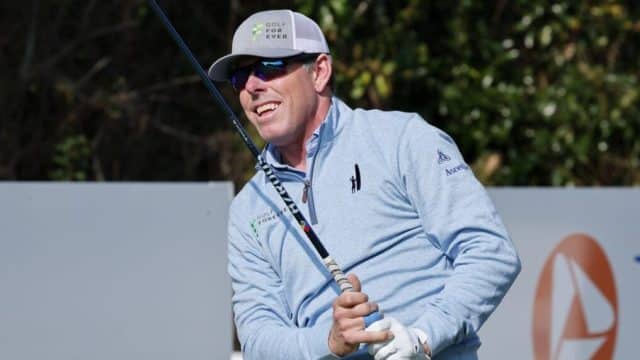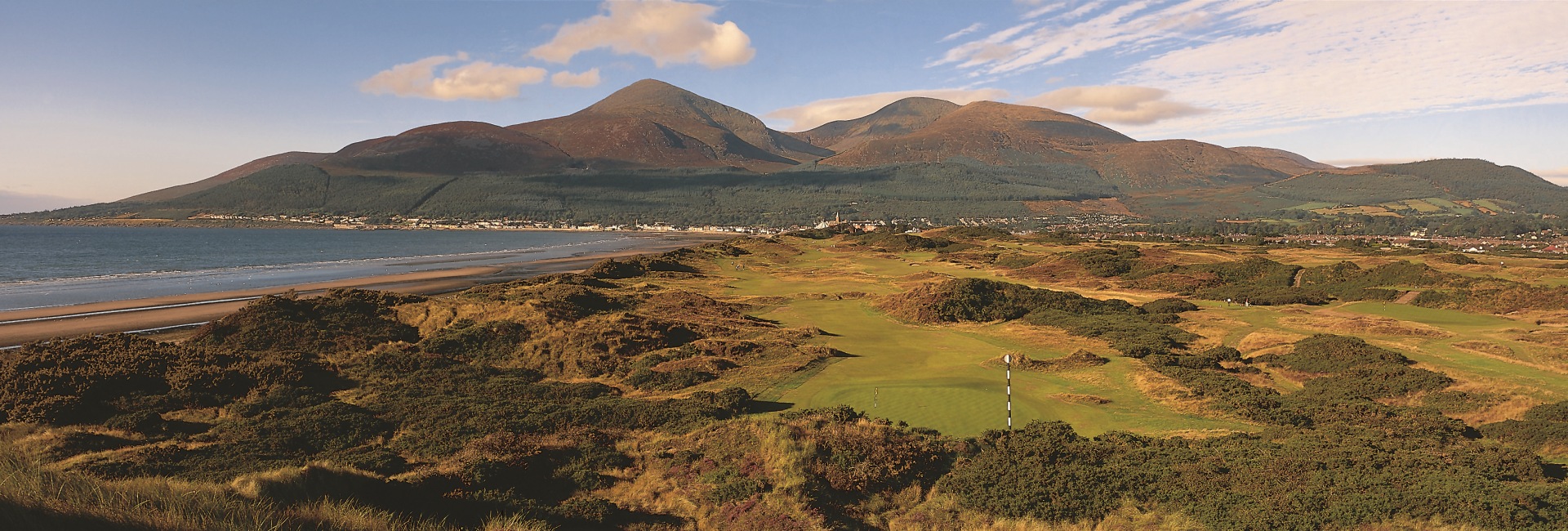Why isn’t Justin Leonard mentioned as a potential Ryder Cup Captain?
Each week, we ask our panel of writers, PGA members and golf industry experts to weigh in with their views on the hot topics of the day.
Tommy Fleetwood won the DP World India Championship last Sunday where it was reported a number of players left their drivers in the hotel all week. A narrow, tree-lined course is a throwback to the usual wide-open bomb-and-gouge style venues we typically see in professional golf, but the Delhi Golf Club delivered a compelling competition and a worthy champion. Power is usually the name of the game on the PGA Tour while accuracy off the tee and strategy are not nearly as critical as they once were. Would you like to see more venues on Tour where driver off the tee isn’t the obvious choice?
Jim Deeks, Fairways Magazine (@jimdeeks): Yes, I would love see players challenged to be more creative and accurate, versus just strong and straight. I wonder how a player like Lee Trevino would fare today. He wasn’t necessarily short with the driver, but he could craft iron shots and wedges like a skilled carpenter. Today’s Tour courses don’t seem to demand that kind of creativity and skill anymore… or at least, challenges can be overcome by length off the tee and 180-yard high eight irons. It’s skillful yes, but kinda boring.
Michael Schurman, Master Professional / Hall f Fame Member, PGA of Canada: Quite simply, this is a ‘rollback’. Either adjust the driver to reduce the length or the ball. Not only does the ball go too far, it goes too straight. The course conditions are so much improved, players play shots to within 50′ of the hole and announcers call that good. Mind you, they are coming from 240 yards with a six iron. Today’s game is only a slight facsimile of the game before 2000. I enjoy Hickory Golf occasionally but not as a steady diet. I like the 1950 to 1990 game the most. A problem with distance still exists even if the players remove their driver from the bag, they still hit PW 170 yards.
TJ Rule, Golf Away Tours (@GolfAwayTJ): I do like courses that take away the bomb and gouge game, but they don’t have to be crazy tree lined, you can accomplish that with long rough, so you still tempt the long hitters but don’t make it as claustrophobic as Harbour Town. It is nice to see ball strikers work the ball once in a while though!
Hal Quinn, Freelance Writer, Vancouver: Decades ago, Richard Helmstetter, designer of the soon-to-be banned Callaway ERC driver, responded to a question about the ball going too far: “Grow the rough!” He could have added: ‘tighten the fairways!’ It was great news to hear that Rory had left his driver in the locker room at the Delhi GC. Many great old courses — tree lined with narrow fairways — have fallen from grace because they’re 6,500 yards not 7,500 yards, and because they require players to ‘golf’ their ball not just bomb and gouge. The Tour should seriously look at more courses like Delhi. The new balls should help a bit too, even if the guys like Rory might have to hit 8-irons instead of 9-irons into 190-yard par 3s.
Peter Mumford, Fairways Magazine (@FairwaysMag): Power has certainly been the dominant criteria for success on the PGA Tour for a long time, so it would be nice to see a few courses where accuracy and shotmakng are demanded. Even the bomb-and-gouge courses could be toughened up a bit with narrower fairways and more penal rough. Maybe a few deep cross bunkers too.
Justin Leonard outduelled Ernie Els in Virginia Sunday to capture his second Champions Tour title. Leonard is one of those players who has flown below the radar for much of his career, but he has a major win amongst his 12 PGA Tour titles and has played on three Ryder Cup teams. That’s a much better record than Keegan Bradley. Why haven’t we heard more discussion about Leonard being a Ryder Cup captain?
Deeks: Good question. I’ve never heard much scuttlebutt about Justin, so I don’t know if he’s popular among his peers or carries some other baggage. I agree he seems to have the credentials to be a Captain.
Schurman: The same question could be asked about Larry Nelson, Hale Irwin, Gene Littler, Mark O’Meara, Gene Sarazen or Jimmy Demaret. Why were some chosen twice when others who deserved weren’t asked? Europe has their mysteries like Sandy Lyle, Neil Coles, Christy O’Connor and Peter Oosterhuis. O’Connor played on 10 teams and Oosterhuis won 15 1/2 pts in his career. Sometimes, a camel is a horse designed by a committee.
Rule: That’s a great question, it would seem like he would be an obvious choice, given his history with the event also. It’s an old boys club, particularly on the US side, so maybe he’s not on the inner circle? But there’s nothing to indicate that I don’t think. I like Leonard, and it’s impressive he keeps playing that well despite the other commitments he has with his media obligations. I’d like to see him get a shot.
Quinn: There’s no “splainin” how the Yanks’ popularity contest works, or their collective brain farts on Cup course set ups. Bradley showed his immaturity and MAGA-like morality when bleating about the Envelope Rule. Leonard must have rubbed enough blazers and players the wrong way to never have been even mentioned as a candidate. Maybe after the mob scenes at Bethpage, he may like that just fine.
Mumford: The PGA of America needs another Task Force, seeing how well the first one worked. Leonard isn’t part of the St. Simons Island boys club, nor does he appear to have any heavyweight support advocating for his captaincy. Too bad because Leonard is a smart, articulate guy and would represent a fresh approach. The way things are going though, he’s almost past his “prime” captain years, according to some inane Task Force criteria.
Speaking of the Champions Tour, most (if not all) of their events are broadcast from a studio in Florida, with only a handful of on-course reporters adding local colour. It seems to work well and presumably reduces expenses. Other Tours may follow suit. Are they missing anything by having their main announce team off-site?
Deeks: I don’t think so. As a former broadcaster, I did many interviews with people in different locations (called “double-enders”), but they were set up so that we could see each other and observe facial expressions. Being remote had no effect on the quality or spontaneity of the conversation. In the case of describing action, as we’re talking about here, I don’t think the announcers are at any disadvantage by not sitting in chairs overlooking the 18th green. In the studio, they can watch the action from many different monitors. Keeping them in a remote studio certainly saves on the cost of travel, and of constructing a booth, with cameras, lighting, teleprompters, etc., and doesn’t detract from the coverage, in my opinion.
Schurman: This is a difficult question. If you standstill, technology will pass you. I watched the event and the one thing I noticed is the announcer (Azinger) didn’t know the course very well. He had trouble predicting how a putt would break because he hadn’t walked the course in the AM. Johnny Miller used to putt every green before he started work as did Roger Maltby. He also walked around surveying the rough and depth of bunkers, and he knew how close to the edge certain pins were. This might work for other sports, but golf requires such incredibly accurate reading of the greens and lies I doubt it is for the best.
Rule: I do think they miss something and hope that the big Tours don’t follow suit. Let’s be honest, they have the money to have everyone on site, and there’s something to being there and talking to the players and interaction that adds to the broadcast.
Quinn: The mute button was not, as many have opined, invented just for Buck Martinez. It comes in very handy during PGA Tour coverage, too. Have not had the pleasure (sic) of watching any Seniors’ Tour remote broadcasts, but if they result in less Lanny Wadkins chatter, that’s a win. The guys in the on-site booths are watching monitors anyway and getting all the stats and superfluous natter material in their earphones from the folks in the truck. Shipping that crew around the country is definitely an unnecessary expense given the audience numbers and the size of the TV deal.
Mumford: When the lead broadcast guys are off-site, they miss talking to the players, learning the course set-up and checking out the greens. They also can’t relate to the atmosphere at the event. Johnny Miller was the best at having little tidbits of knowledge that he had learned first-hand. Sure, the on-site guys can pass stuff along but it’s not the same as being there.






